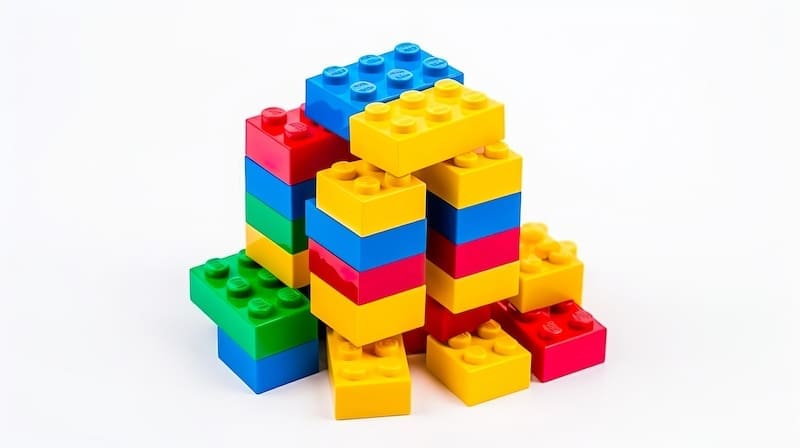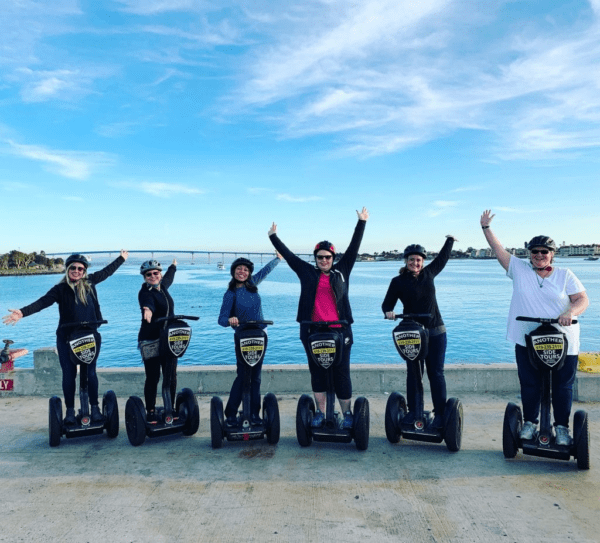25 Problem Solving Team Building Activities
While we are in lockdown (transition to or from) and acclimating to virtual life, these activities will engender trust, create strong bonds, and improve the problem solving abilities of everyone that plays them!
Benefits of Team Building Problem Solving Activities
Problem solving skills are one of the most essential components of a competent workplace. When we attempt to solve problems within a group, we need strong communication skills, adaptability, and collaborative clarity. The team building activities in this list house a smattering of interactive and creative approaches that can help foster these skills in any healthy team.
25 Problem Solving Team Building Activities
Scavenger Hunt
Embarking on a cityHUNT Scavenger Hunt is a thrilling team-building activity designed to enhance problem-solving skills, creativity, and communication. The goal is for each team to navigate a list of items and bring them all back within a set time frame, with the first team to return winning. The experience begins with a Discovery Call to tailor the event to your needs, followed by detailed planning and preparation. On the event day, teams use our state-of-the-art mobile app or receive full support from our Adventure Guides to explore the city, solve riddles, and complete tasks, all while earning points and fostering collaboration.
This cityHUNT Scavenger Hunt not only breaks up the workday with outdoor fun but also promotes critical thinking and effective teamwork. The activity’s customizable nature ensures it fits your team’s unique dynamics and objectives. Post-event, participants can relive the excitement through photos and videos shared in a thank-you email. Book your Discovery Call today and discover why cityHUNT is a top choice for enhancing team dynamics and creating lasting memories.
This cityHunt Scavenger Hunt is a fantastic way to get your group problem solving together!
Egg Drop
Making decisions isn’t always easy, but the inability to make decisions can stagnate a team and lead to thought paralysis. Decision-making team-building activities, like the Egg Drop, help your staff make quick and effective choices, often relying on their gut instinct, which is usually spot on.
For the Egg Drop challenge, gather a carton of eggs and various construction materials such as newspaper, tape, and rubber bands. Head to the parking lot or any outdoor space with a safe ledge or platform. Divide your team into smaller groups and give each team an egg and the same set of materials. Set a timer for twenty minutes and let each team design and build their egg carrier. Once the time is up, take turns dropping the eggs from the ledge to see whose design can protect the egg from breaking. Continue this process until only one egg remains unbroken. Afterward, discuss the decision-making strategies and thought processes behind each team’s design, highlighting what worked and what didn’t. This activity not only encourages creativity and quick thinking but also fosters teamwork and problem-solving skills.
A Shrinking Vessel
Adaptability is a crucial aspect of effective problem-solving, enabling teams to navigate shifting needs and unexpected challenges with agility. Teams that excel in adapting on the fly can solve problems more efficiently and innovate even in the midst of a crisis. The “Shrinking Vessel” activity is designed to enhance these skills by putting your team’s adaptability to the test.
To set up the activity, lay a piece of rope or string on the floor to form a large shape that your team can comfortably fit within, such as a circle or rectangle. Over a period of fifteen minutes, gradually reduce the size of the shape by moving the rope or string inward. The challenge for the team is to work together to adjust and stay within the ever-decreasing boundaries. This requires continuous real-time communication and collaboration as team members must strategize and reposition themselves to ensure everyone remains within the shrinking space. The exercise emphasizes the importance of adaptability and quick decision-making, helping teams develop the flexibility needed to thrive under pressure and respond effectively to changing circumstances.
Virtual Team Building
Remote work can present unique challenges, especially for teams that are accustomed to in-person interactions. Adapting to this new way of working can be daunting, but virtual team building offers a wealth of opportunities to foster connection and collaboration. The virtual world is brimming with engaging activities designed to bring teams together, even when they’re miles apart.
There’s no shortage of virtual team-building options that can be seamlessly integrated into your remote work routine. Virtual scavenger hunts, game shows, trivia competitions, and various team-based challenges can all be conducted via popular virtual conferencing platforms. These activities are not only fun but also serve as effective tools for problem-solving and strengthening team dynamics. For instance, virtual scavenger hunts can be tailored to include items or tasks that are relevant to your team’s interests or current projects, encouraging collaboration and creativity. By leveraging these virtual tools, teams can enjoy interactive and rewarding experiences that help bridge the gap created by physical distance, making remote work both productive and enjoyable.

Marshmallow Spaghetti Tower
The Marshmallow Spaghetti Tower challenge might sound like a recipe for chaos, but it’s actually a fantastic exercise in collaboration and creative problem-solving. The goal isn’t to cook anything—just to use dry spaghetti noodles, marshmallows, and a few optional extras like tape and string to build the tallest and most stable tower possible.
This activity underscores the importance of teamwork and innovation. To start, divide your group into teams and provide each with a set of materials: dry spaghetti noodles, marshmallows, and, if you choose, tape and string. Set a specific timeframe for the challenge—typically 20 to 30 minutes is ideal. The teams must strategize and work together to design and construct their towers using only the materials provided. The catch is that the tower must be free-standing and able to support itself without collapsing.
As the teams work, they’ll need to communicate effectively, make quick decisions, and adapt their strategies based on what’s working and what isn’t. This process of trial and error fosters collaboration and encourages creative thinking. At the end of the allotted time, measure the height of each tower to determine the winner.
The Marshmallow Spaghetti Tower exercise not only brings out the competitive spirit but also demonstrates how effective teamwork can lead to innovative solutions and impressive results. It’s a fun and engaging way to build trust and cooperation among team members, proving that with the right mix of creativity and collaboration, even the simplest materials can lead to extraordinary achievements.

Dumbest Idea First
What’s more fun than a dumb idea? For this game, encourage your team to unify and quickly think of the dumbest ideas they can to solve a specific problem. Once accomplished, consult the list and flesh out the ideas that aren’t actually dumb so you can serve up a good solution to your problem. You might find that these so-called “dumb” ideas are actually fairly creative and host some original solutions!
Stranded
This game helps everyone build strong communication standards and enhances the foundations of decision-making among your employees. It’s imperative that your teams learn proper communication strategies, especially when it comes to problem solving. In our remote-work world, communication skills are extremely important to mitigate frustrations and smooth the channels that lead to impactful problem solving.
To play Stranded:
- Your team is stranded in the office!
- The doors and windows are locked and cannot be opened.
- Give your team half an hour so they can choose up to ten items necessary to survive.
- Rank their ten items in order of necessity.
- The goal of this game is that at the end, each team member of each team will agree on the ten items needed and their ranked order, coming to a conclusion that will rescue them from being stranded.
End in Mind
The “End in Mind” activity is a dynamic problem-solving exercise designed to help your team approach projects from a unique perspective. By starting with the end result and working backward, this activity encourages strategic thinking and creative problem-solving.
Here’s how it works: Begin by defining the final goal or outcome of a project. Present this end result to your team first, then provide a series of milestones, deadlines, and steps in reverse order. The challenge is for the team to piece together these elements to construct a coherent plan that leads from the final goal back to the initial starting point.
The reverse order of the milestones forces team members to consider how each step contributes to achieving the end result. This method encourages them to think critically about each component’s role in the project, identify potential obstacles, and develop innovative solutions to ensure all pieces fit together seamlessly. By analyzing the project in reverse, teams gain a deeper understanding of the dependencies and sequences needed for successful completion.
The “End in Mind” activity not only sharpens problem-solving skills but also enhances strategic planning and foresight. It’s a valuable exercise for developing a comprehensive view of how complex projects come together and for honing the ability to anticipate and address challenges before they arise.
Legoman
Legoman is an engaging team-building activity that leverages the nostalgia of childhood toys to improve communication and collaboration within your team. This exercise challenges participants to work together, translate verbal instructions into action, and build a shared understanding.
To start, divide your team into small groups of two to three people each. Select a person who is not part of any team to create a random Lego structure within a set time limit of ten minutes. This person will build the model out of sight from the other participants.
Once the structure is complete, each team is given the same ten-minute timeframe to replicate the model. However, there’s a twist: only one member of each team can view the original Lego construct. This person must describe the model to their team without directly showing it, relying solely on their ability to communicate details clearly and accurately. The rest of the team listens and interprets the description to assemble the structure as closely as possible to the original.
This activity highlights the importance of effective communication and listening skills, as well as the need for clear and concise instructions. It challenges team members to collaborate and problem-solve in real-time, fostering a deeper understanding of how well they work together and how they can improve their communication strategies. By using a familiar and playful medium like Legos, the exercise makes learning these essential skills enjoyable and memorable.

Escape
This fun game enhances collaboration amongst your staff. Utilizing clues and tools, they will attempt to unlock a room within a given time frame. You will need a room that you can (safely) lock, a key for that room, rope, and a set of puzzles and/or clues.
The basic idea of this game is to solve all the clues presented and find the key so that they can unlock the room. Hide the key somewhere in the room, and make sure that the list of clues and puzzles that lead to the key are solvable and not too obtuse. Once your team is ready to go, you can give your team a time limit to complete the activity.
This game truly shows why team building is important!
Frostbite
Let’s take a break from the communication problem solving activities and play a game that requires decision making and adaptability. To play Frostbite, you will need an electric fan, some card stock/sticky notes/rubber bands, and a blindfold.
Your team is out on an exploration of the arctic. Separate them into groups of about four or five people, and have them choose a leader for the adventure. Your teams need to construct shelters that will protect them from an oncoming storm front that will ruin them in thirty minutes. Like the name of the game, your team leaders are suffering from frostbite, and the rest of the team is blinded because of the snow. Using the provided materials, team leaders and team members must rely on one another to build shelters that can endure the “high winds” when the storm hits (the electric fan). When the time comes, turn on the fan and see whose shelter can weather the storm!
Move It!
This is another fun adaptability game that encourages collaboration and communication among your staff. To play this game you will need at least one item that can “mark” a space, such as tape, paper, chalk, etc.
- Divide the group into two teams, and align these teams so that they’re facing one another.
- Using your space marking item, label an area for each person to stand in.
- Make sure you leave some space between the rows of people facing each other.
- To solve the objective, have the two lines of facing team members swap places.
Caveats: Only one person can move at once, moving backward isn’t allowed, a person can only move around the people from the other team one at a time, and a person can’t move around anyone if they’re both facing the same direction.
It’s tough!
What Would X Do
Is your team stagnating on new ideas? This problem solving activity might stimulate your staff toward innovation.
In order to play What Would X Do, allow your teams to pretend to be someone famous. As a famous person, address an issue at hand. Have them ask themselves, what might they do in this particular situation? What might they consider? What choices would they make? This helps your team consider things in a new light.
Bonding Belt
For this game, divide your groups into five participants, binding them together with tape or rope in order to limit their movements. You want the teams to go from designated Point A to Point B, and make sure you record the time. Each team will work together in order to beat their previous scores.
Minefield
To play Minefield, we are going to place items around the room in a randomized fashion so that the path from one side to the other is properly occluded and confusing. Divide up your team. Blindfold one team and have the other team serve as the guides.
The guide team then navigates the blindfolded team through the minefield, being certain that players don’t touch (any players that touch are out!). This is a team building activity of trust and survival, one that requires concise communication and collaborative problem solving.
Reverse Pyramid
Direct your team to stand together in the shape of a pyramid. What you want to do here is “flip” the base and apex of the pyramid, limiting who can move to only two or three people. Your team will want to work together in order to flip the pyramid successfully, and this game works as a great communicative device that will need a lot of proper decision making.
Human Knot
The Human Knot is a dynamic and engaging team-building activity that focuses on enhancing group coordination, communication, and problem-solving skills. This classic game is not only fun but also a powerful tool for fostering teamwork and developing collaborative strategies.
To begin, gather your team and instruct them to form a circle. Each participant should reach across the circle to grab the hand of someone who is not directly next to them, ensuring that everyone is connected. Once all members are linked, the challenge is to untangle the knot without releasing anyone’s hands. The group must work together to maneuver and twist their bodies to gradually unravel the knot and restore the circle.
The Human Knot exercise encourages participants to communicate clearly and strategize collectively. As they work through the physical and spatial challenges of untangling themselves, team members must discuss and agree on the best approach to achieve the goal. This requires a high level of cooperation and flexibility, as well as the ability to listen to and incorporate ideas from all team members.
Throughout the activity, team members will learn about the importance of coordination and the value of each person’s input in solving complex problems. The exercise also highlights how diverse perspectives and teamwork can lead to successful outcomes, even in seemingly difficult situations.
Dog, Rice, and Chicken
This is a fun, silly problem solving activity that might help your adult staff cut loose. Direct one team member to play the role of the farmer, and the other team members are the villagers that advise them. The farmer will get three items: a dog, some rice, and a chicken, which they take across a river via boat.
You may have played this game before, or maybe you’re aware of the narrative device: only one item can be taken across at a time, and there are limits. The dog will eat the chicken. The chicken will eat the rice. Your team will have to work together to figure out how to properly bring everything across the river.
Crack The Case
Have you ever played a classic murder mystery group game? These virtual “Whodunnits” force employees to work collectively to crack a case or solve a murder. Remote games are super fun, and everyone from commuters to remote workers to in-house staff can play together.
Virtual Clue Murder Mystery Games use video conferencing platforms and apps to let coworkers solve cases together. They can study case files, look over clues, and work together to parse out motive, method, and everything else behind classic mysteries. It’s a great time.
What Would You Do
This hypothetical question game will favor communication and brainstorming efforts by gathering your team together for a problem solving activity that is intriguing and silly. This game works by asking absurd questions and getting thoughtful answers.
For example, you could ask someone “If you didn’t have to breathe, what would you do?” or “If you never had to eat, what would you accomplish?” Your hypothetical questions should be fairly optional and open, and they need to get your team talking. Try to come up with an inventive, fun list that garnishes thoughtful responses.
Can You Tell What I Changed?
This great communication-based problem solving activity doesn’t take too long and is fun for everybody. To play it, divvy up your team into groups and have them face each other in a line. Observe the individuals standing across from one another, giving them a minute or so to look. Then have them close their eyes.
Instruct the other line of people to make a bunch of quick changes to their appearances. They can put their hair up or down, take off their jackets, turn out their ties, and whatever else they might come up with in that short period of time. Have the other group open their eyes and identify each change as quickly as they can. Play this game as many times as you want, making it more and more complicated.
This is a fun problem solving activity that makes a great team icebreaker or just a quick break from office work.
Organizational Jenga
Organizational Jenga is a thought-provoking team-building activity designed to illustrate the importance of various departments within a company and how each role contributes to the overall stability of the organization. This game uses the familiar mechanics of Jenga to highlight the interdependence of different teams and the impact of removing key elements from the structure.
To set up the game, you’ll need a Jenga set or some similar blocks, each labeled to represent different departments or roles within your organization, such as HR, management, IT, support staff, and so on. Ensure the number of blocks for each department corresponds to the actual composition of your office.
Divide your team into small groups, giving each group an equal number of labeled blocks. Provide guidelines for the structure they must build, such as specific dimensions or shapes, and set a time limit for the construction phase. Once the structures are built, begin removing blocks in a manner similar to traditional Jenga, challenging the teams to maintain their structure’s stability as pieces are taken away.
This activity is more than just a physical challenge; it serves as a powerful metaphor for organizational dynamics. As blocks are removed, teams will see firsthand how the absence of certain roles or departments can destabilize the entire structure. This emphasizes the critical importance of each role within the company and the potential consequences of losing any individual team member.
Web of Wools
For this game, divide your team up into equal parts. Have your team form up a “web of wools,” one that should be as intricate as they can manage. Using yarn or string, your teams should entangle themselves together. Then switch the teams up so that everyone has a different web. Have one team member on each side be blindfolded and attempt to untangle each web only by the provided instruction of the other team members. Whoever does it first is the winner!
This is a fairly difficult game that can come with its own unique frustrations. The blindfolded person will have to balance their own preferences and instincts with the instructions of their teammates. This is a great team building activity that balances communication with problem solving.
The Barter Puzzle
The Barter Puzzle is an insightful team-building exercise that challenges your groups to perform under pressure while honing their negotiation and communication skills. This activity is designed to highlight how well teams can collaborate, negotiate, and delegate tasks to achieve a common goal.
To begin, divide your participants into teams of about five people each. Provide each team with a jigsaw puzzle of varying complexity, but with a twist: the puzzle pieces are mixed among all the teams, meaning no single team has all the pieces needed to complete their puzzle. The objective is for one team to be the first to complete their puzzle, but this can only be achieved through negotiation and bartering with the other teams to acquire the missing pieces.
Teams must strategize and communicate effectively to determine which pieces they have and which ones they need. They’ll need to negotiate with other teams to trade puzzle pieces, assign roles within their team, and make decisions about how to best use their resources. It’s crucial that teams work together and avoid having individuals work independently, as the collaborative nature of the task is key to solving the puzzle efficiently.
This activity is a practical way to observe and assess several important skills: negotiation tactics, communication effectiveness, and the ability to function under pressure. It reveals which teams excel at strategizing and working cooperatively, and which may need to improve their communication and negotiation strategies. The Barter Puzzle is not only a fun and engaging challenge but also a valuable exercise in understanding and enhancing team dynamics.
Create your own
This is a unique version of the above games. The point of this game is for the team to brainstorm and come up with their own problem solving activity that is unique to your business and supports your values, ideals, and needs. By conquering this team building game, your team will build creativity and decision making skills.
Give them an hour to craft a team building exercise that is based on problem solving. Divide your staff into teams where they will be encouraged to develop new exercises that fit into your organization. The exercises should be unique, fun, and engaging. Then, have each team show off their created activities to everyone else. Have the others show the pros and cons of the created activities, and discuss how they came to the idea and what the benefits are.
No matter what you decide to play, we are certain that there are enough ideas on this list to get your group up and problem solving together! These team building activities are such a great way to get your team to communicate and negotiate, and best of all these games will bring your staff together during this tumultuous time. Problem solving is one of the backbones of any successful, growing business, and these games are sure to be celebrated by your staff for years.
If you’re looking for ways to bond beyond the rigors of the office, consider these virtual happy hour ideas that will bring your staff together in a relaxing way.







